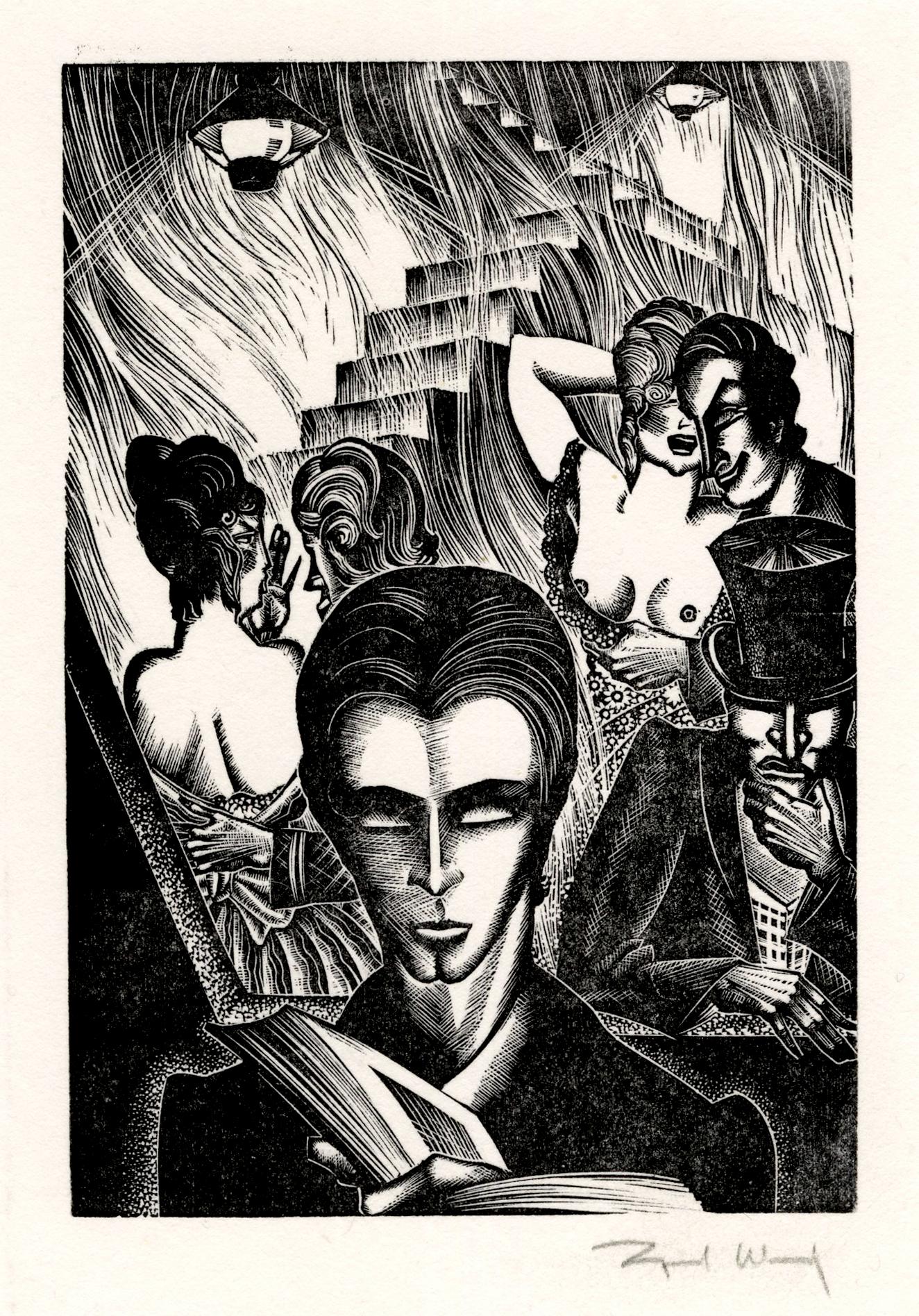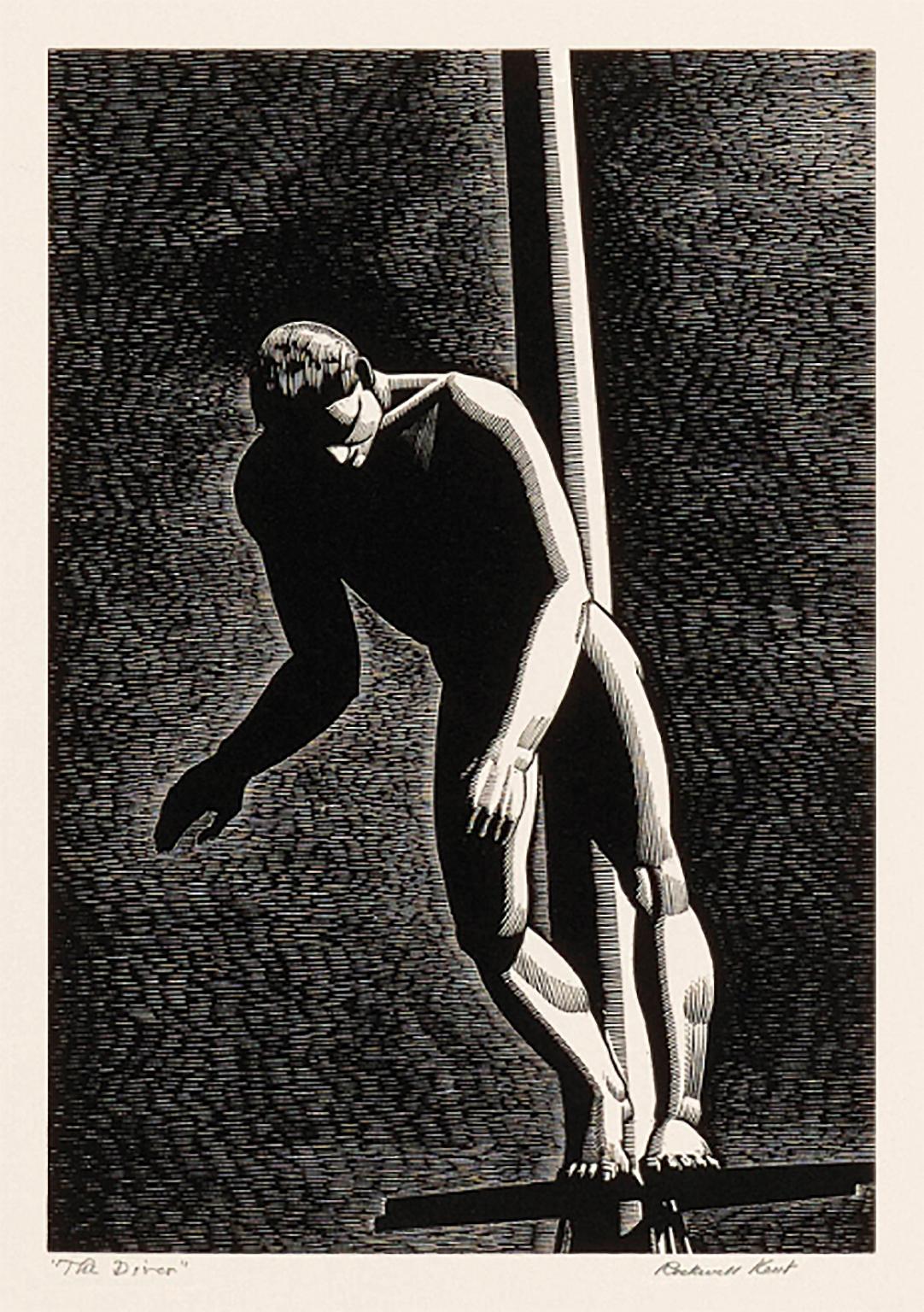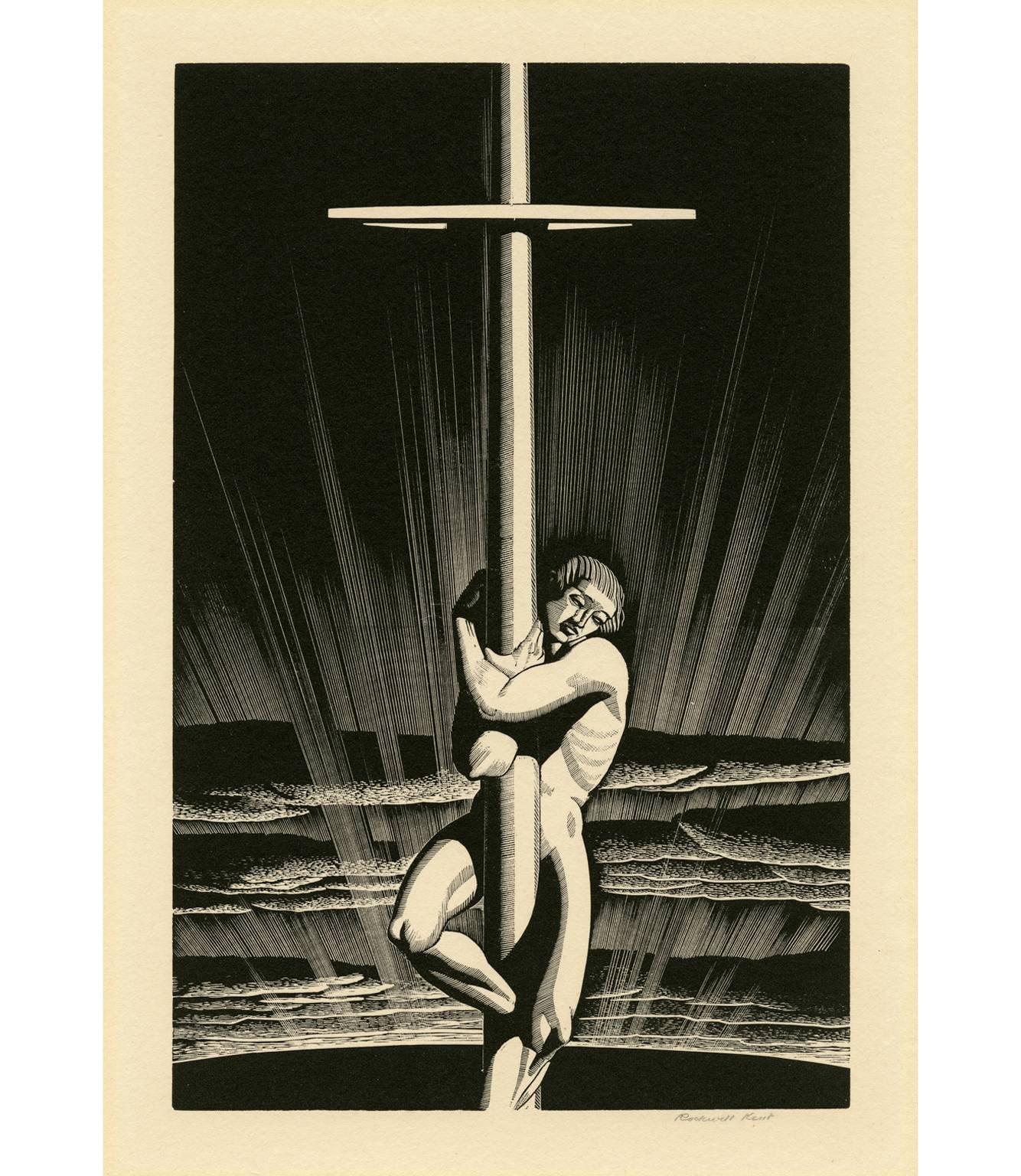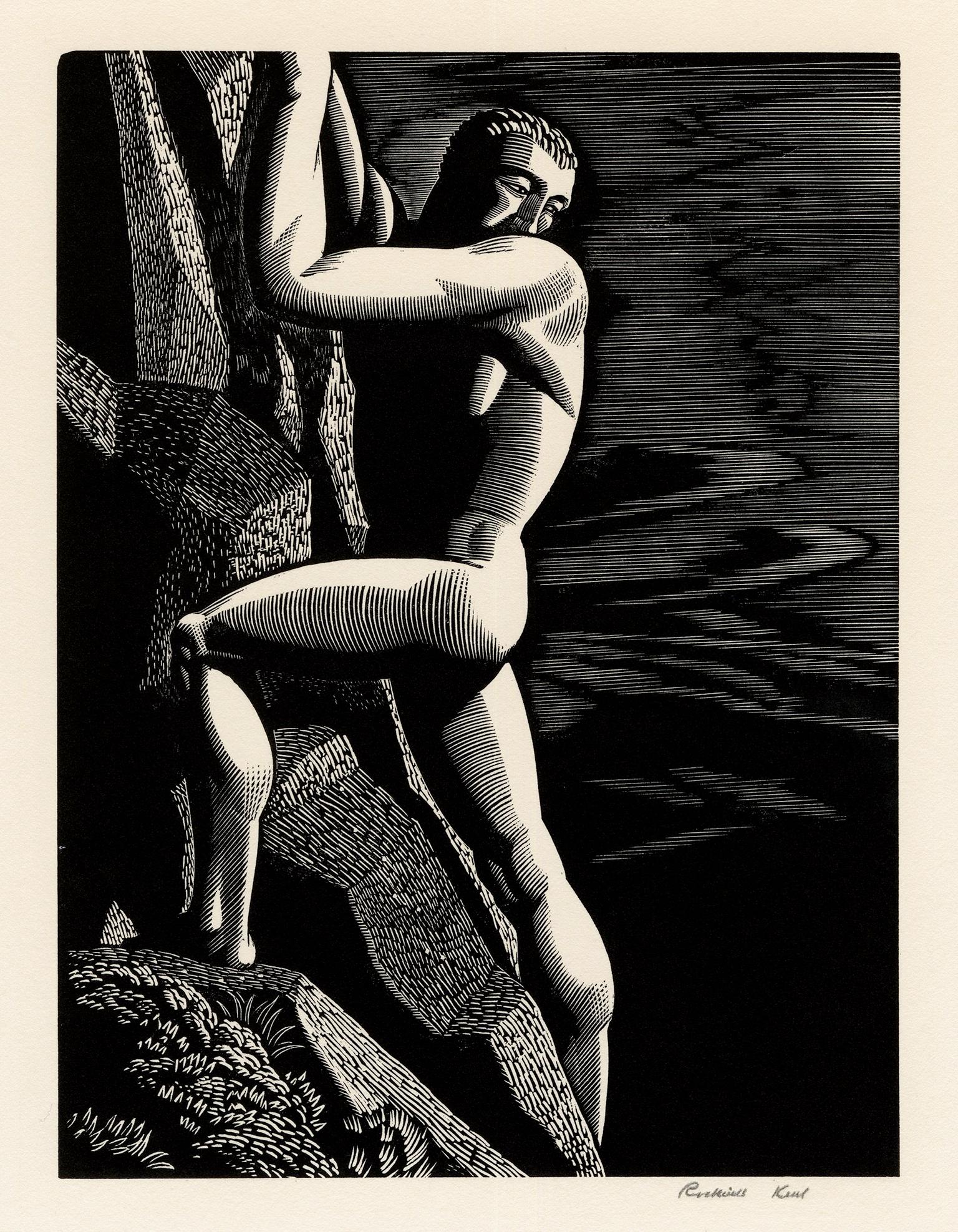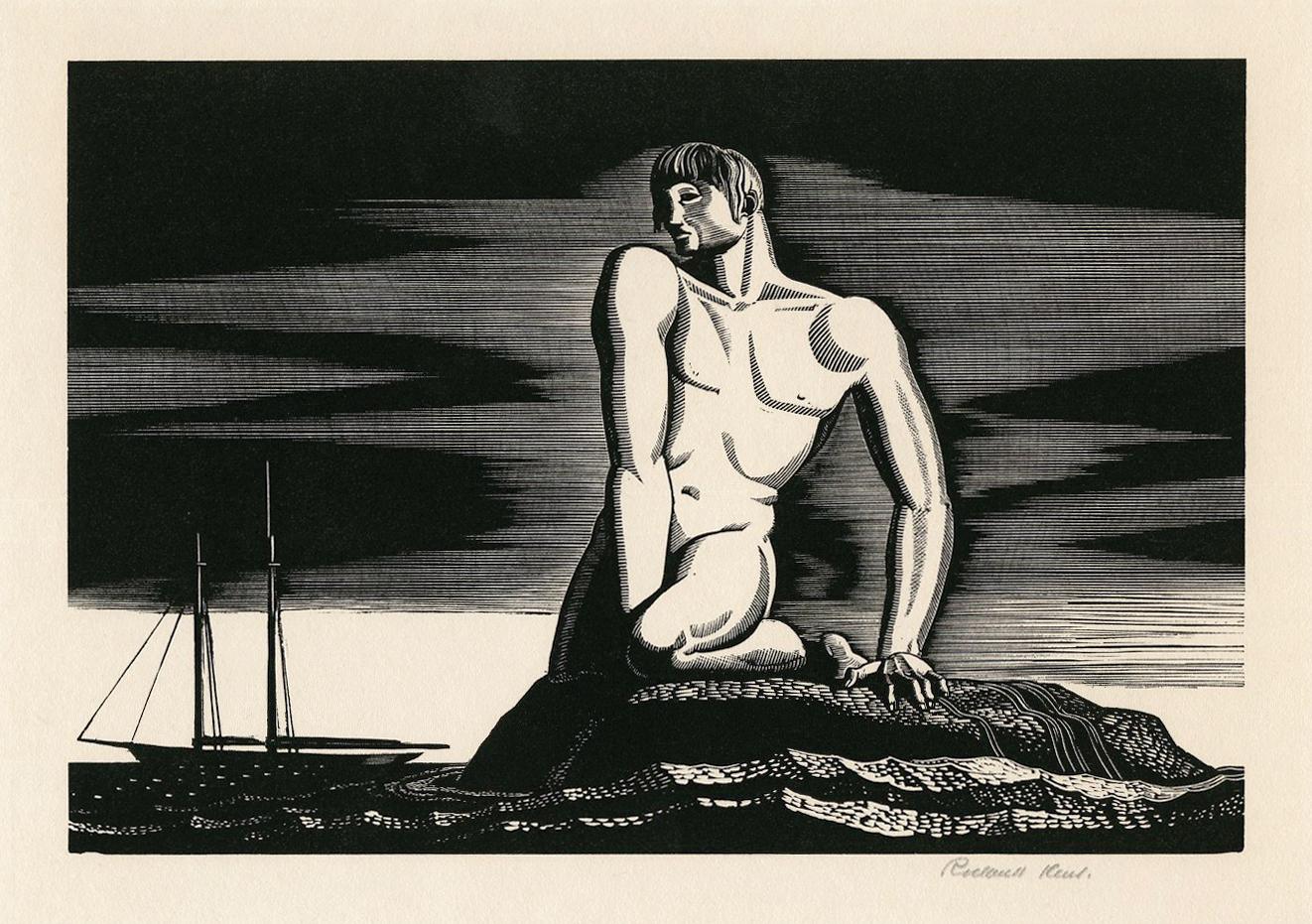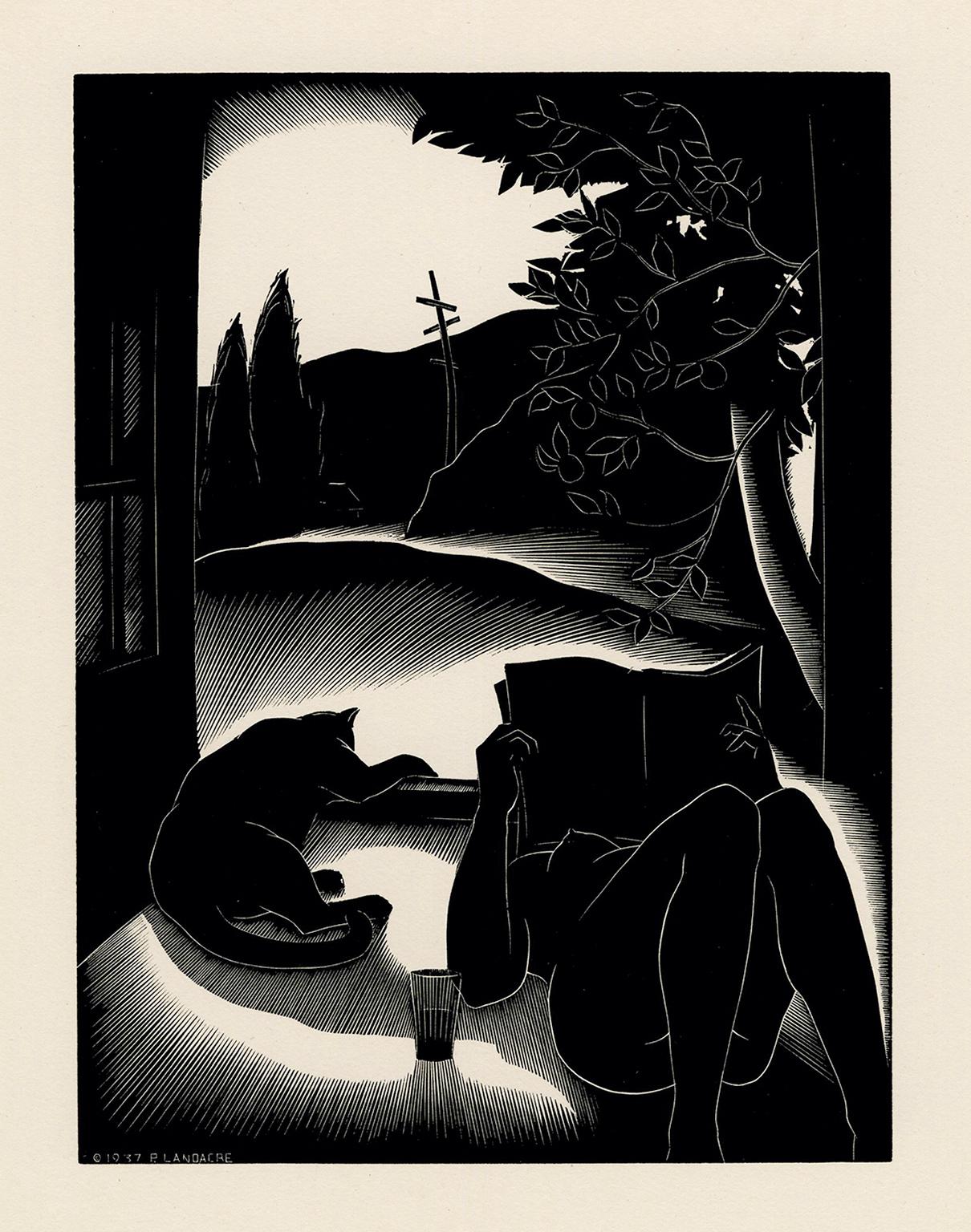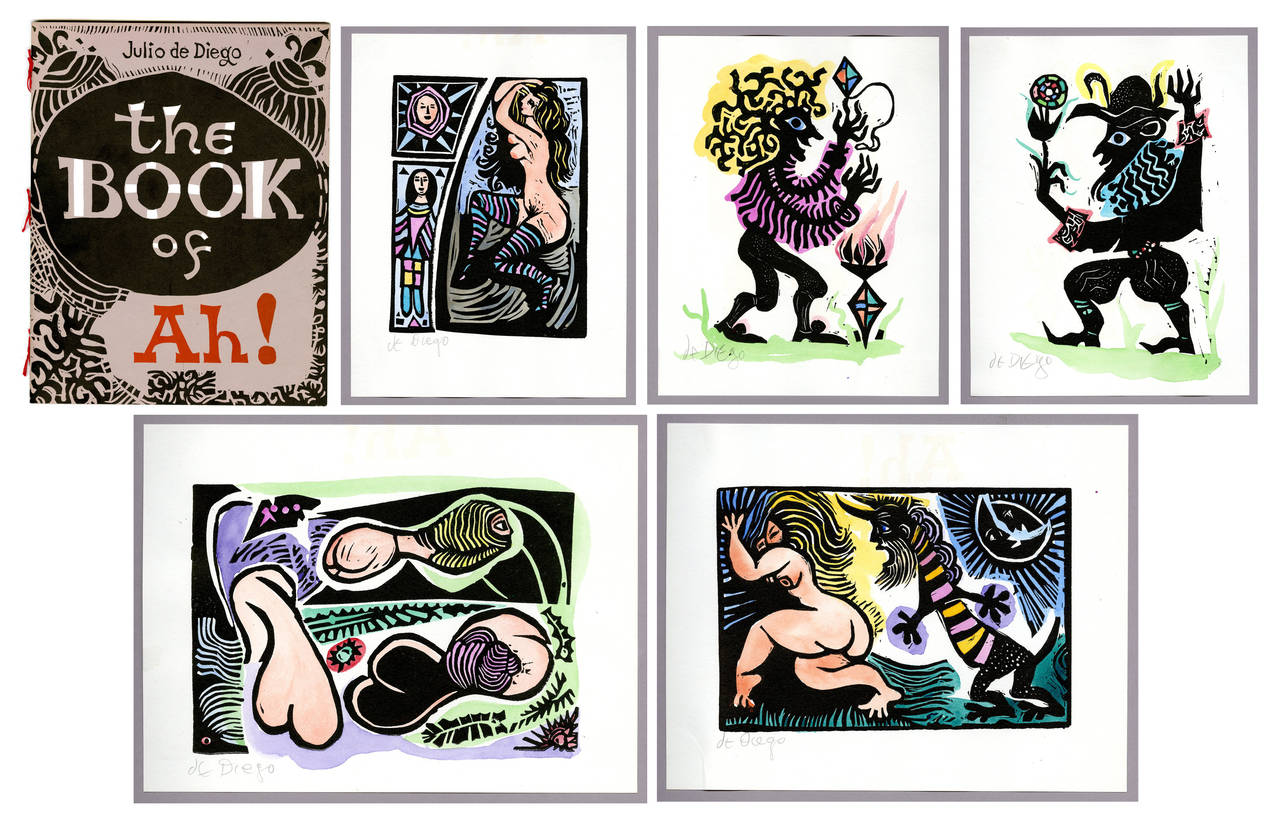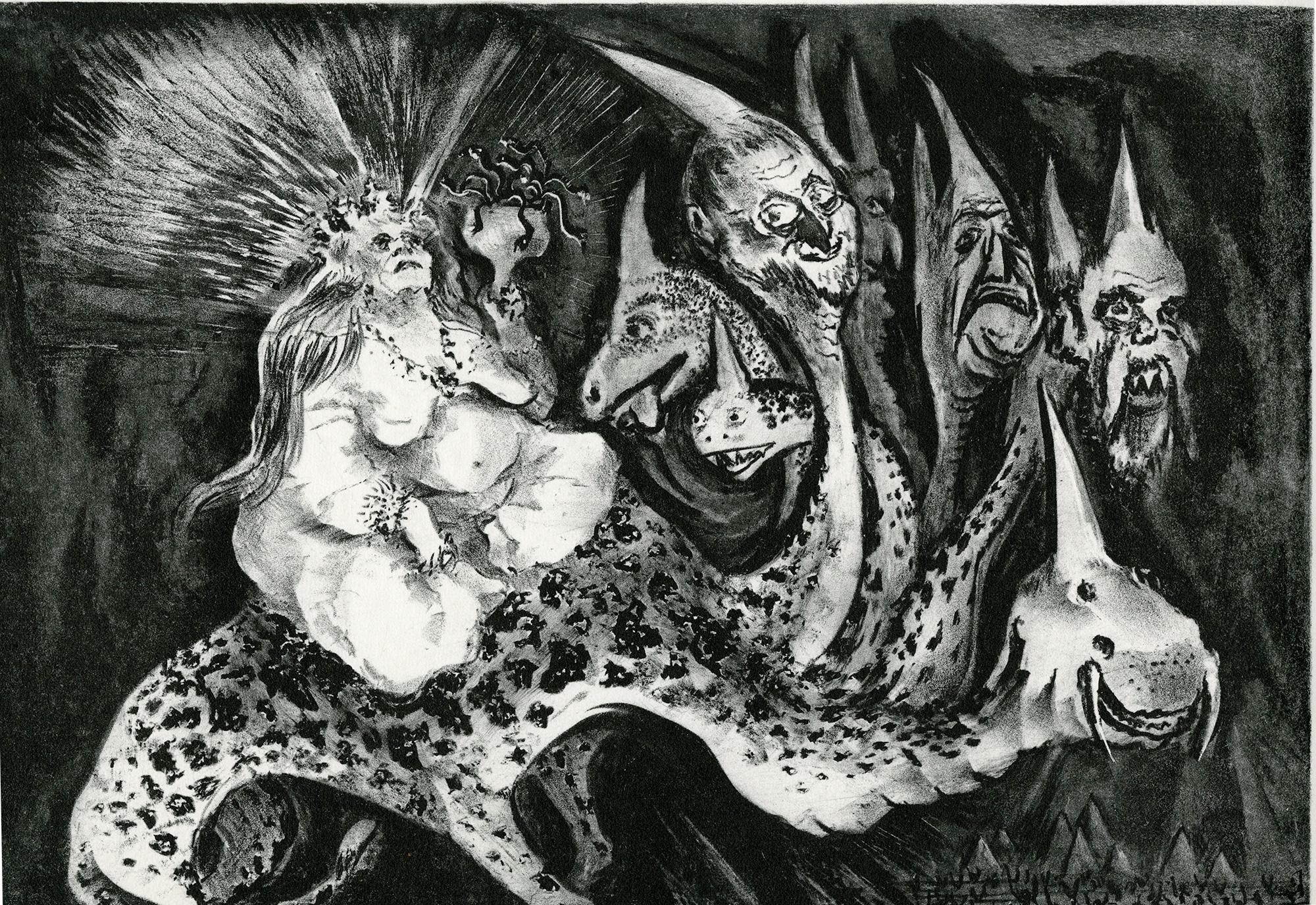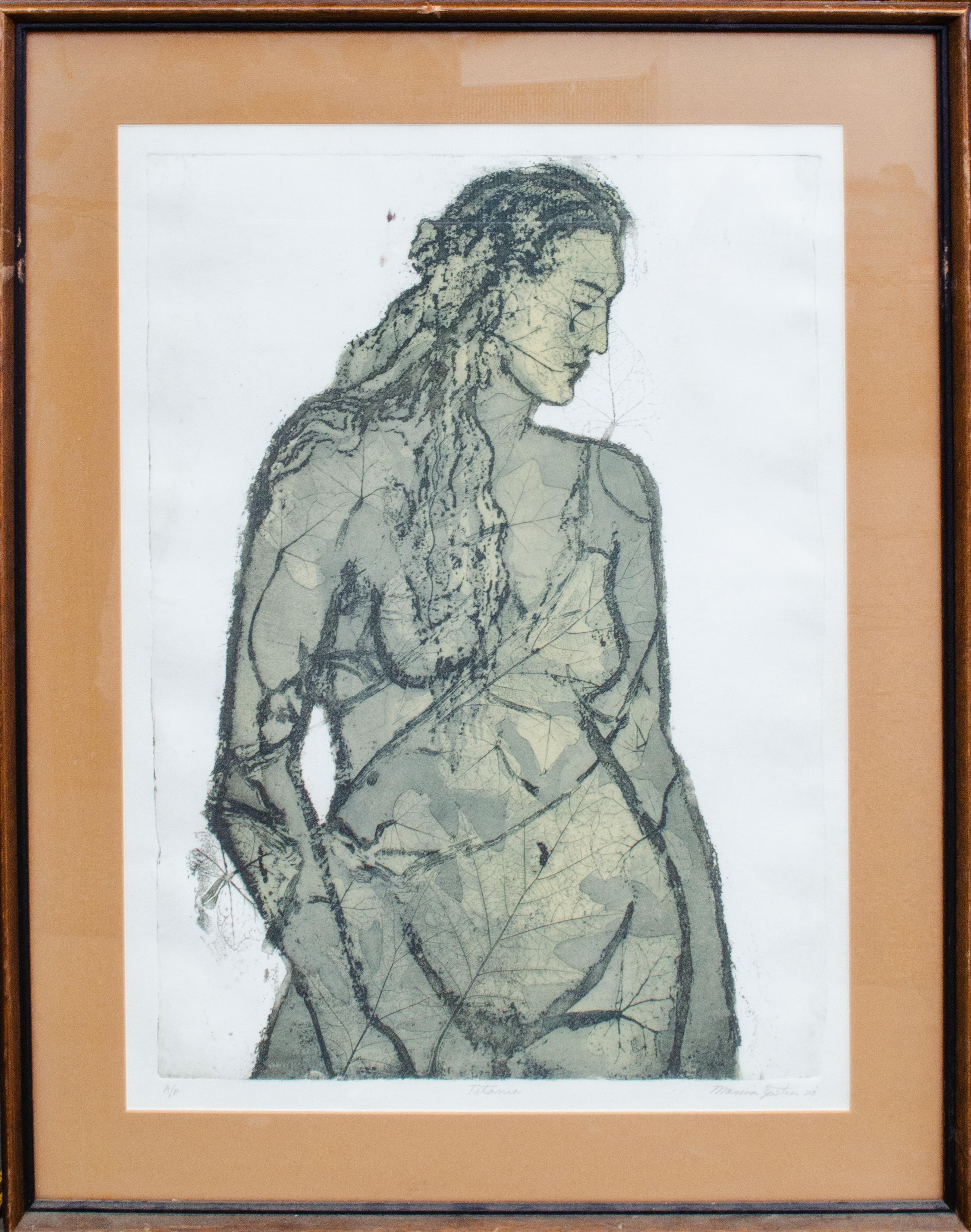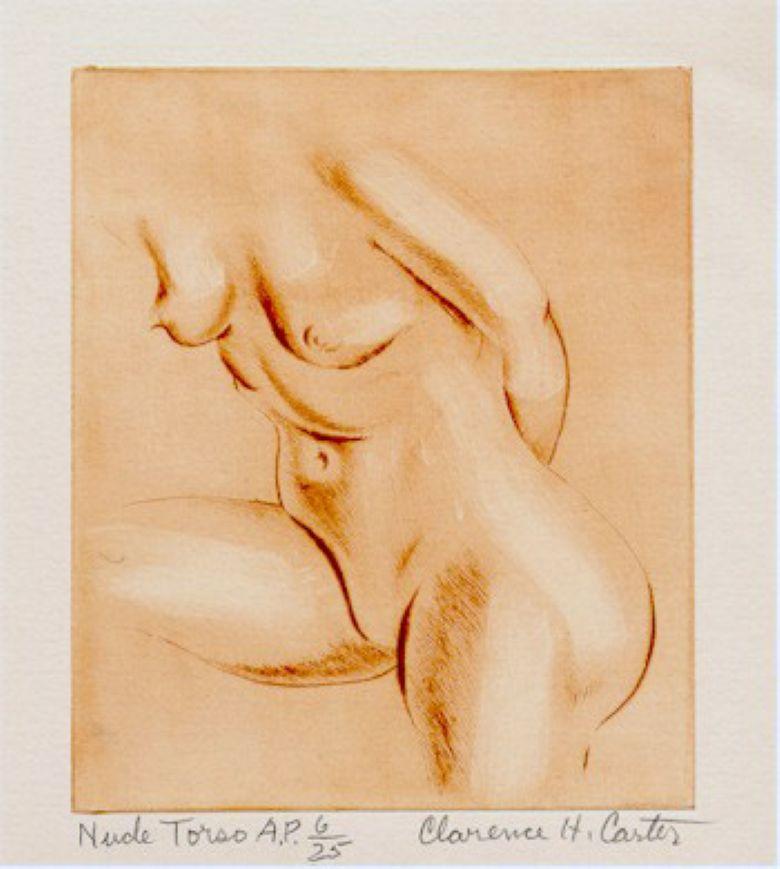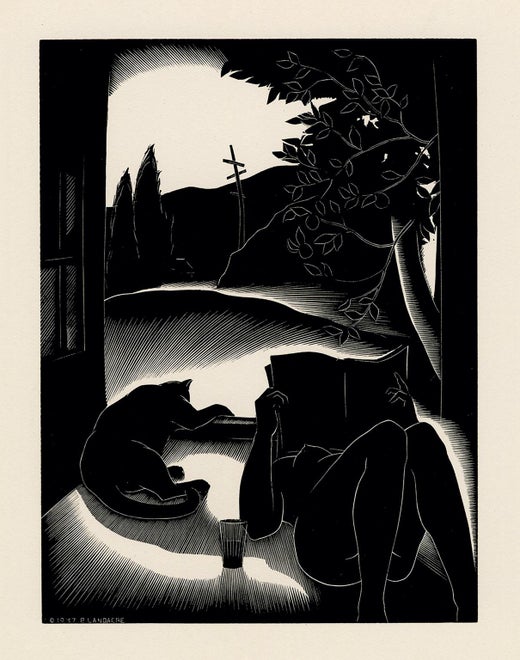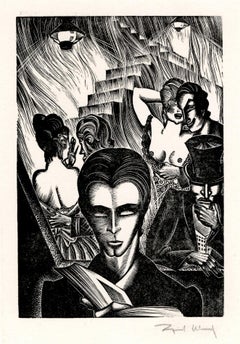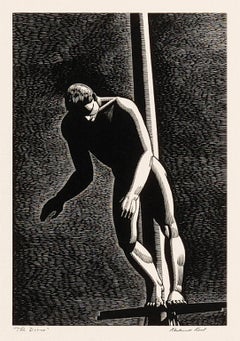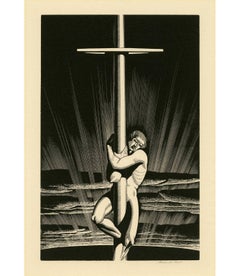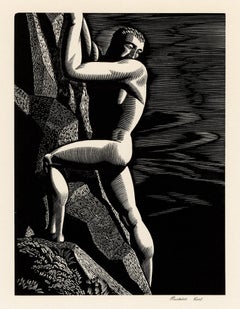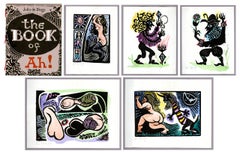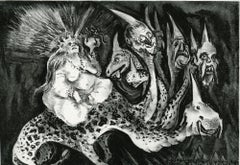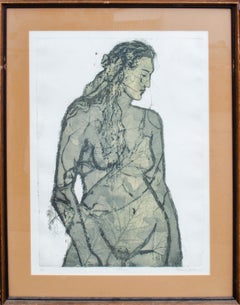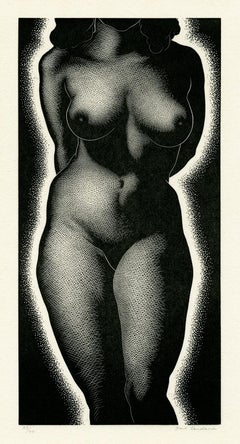
Anna
View Similar Items
Want more images or videos?
Request additional images or videos from the seller
1 of 3
Paul LandacreAnna1938
1938
Price:$2,200
$2,400List Price
About the Item
- Creator:Paul Landacre (1893-1963, American)
- Creation Year:1938
- Dimensions:Height: 9 in (22.86 cm)Width: 4.5 in (11.43 cm)
- Medium:
- Movement & Style:
- Period:
- Condition:
- Gallery Location:Myrtle Beach, SC
- Reference Number:Seller: 1030671stDibs: LU53234218021
Paul Landacre
Paul Landacre was an illustrator who specialized in wood engravings of naturalistic images executed in a sparse, rhythmic, linear style. Born in Columbus, Ohio, he was an athlete as a youth. During his sophomore year at Ohio State University, he contracted a life-threatening illness that left him partially disabled. During this same year he also enrolled in a drawing class. After a long recuperation, Landacre moved with his family to California. In order to increase his physical strength he took long walks in the nearby rural areas, and on these walks, drew in his sketchbook. By 1918 he found a job as a commercial illustrator. In 1923 he enrolled at the Otis Art Institute, where he studied all types of media, including wood engraving. Landacre's artistic reputation began to emerge in the early 1930s with the publication of his book California Hills and other Wood Engravings and his first one-person exhibition in Los Angeles. He received many commissions for book illustrations; since he worked in a careful, deliberate manner, his large projects required years to complete. For thirty-one years the artist maintained a hand press in his home, allowing him to have total control over the printing of his designs. In 1939 he was made an associate of the National Academy of Design. The remainder of Landacre's professional career was balanced between teaching and illustrating books. Two examples from the National Gallery's permanent collection demonstrate the range of Landacre's work. His engraving, Smoke Tree, evokes the nearby desert scenery that the artist knew. The sharp, angular canyons of the mountain contrast with the delicate, small-leafed tree in the foreground. Some Ingredients is a still life composition that displays the same strength of line, forceful contrasts, and textures seen in his landscapes. [This is an excerpt from the interactive companion program to the videodisc American Art from the National Gallery of Art. Produced by the Department of Education Resources, this teaching resource is one of the Gallery's free-loan educational programs.]
About the Seller
5.0
Recognized Seller
These prestigious sellers are industry leaders and represent the highest echelon for item quality and design.
Platinum Seller
Premium sellers with a 4.7+ rating and 24-hour response times
Established in 1995
1stDibs seller since 2016
316 sales on 1stDibs
Typical response time: 1 hour
Associations
International Fine Print Dealers Association
Authenticity Guarantee
In the unlikely event there’s an issue with an item’s authenticity, contact us within 1 year for a full refund. DetailsMoney-Back Guarantee
If your item is not as described, is damaged in transit, or does not arrive, contact us within 7 days for a full refund. Details24-Hour Cancellation
You have a 24-hour grace period in which to reconsider your purchase, with no questions asked.Vetted Professional Sellers
Our world-class sellers must adhere to strict standards for service and quality, maintaining the integrity of our listings.Price-Match Guarantee
If you find that a seller listed the same item for a lower price elsewhere, we’ll match it.Trusted Global Delivery
Our best-in-class carrier network provides specialized shipping options worldwide, including custom delivery.More From This Seller
View AllMadman's Drum (Brothel) — 'Story Without Words' Graphic Modernism
By Lynd Ward
Located in Myrtle Beach, SC
Lynd Ward, 'Madman's Drum, Plate 41', wood engraving, 1930, edition small. Signed in pencil. A fine, richly-inked impression, on off-white tissue-thin Japan paper; the full sheet with margins (1 5/8 to 2 1/2 inches); a small paper blemish in the upper right margin, away from the image, otherwise in excellent condition. A scarce, artist-printed, hand-signed proof impression before the published edition. Matted to museum standards, unframed.
Image size 5 1/2 x 3 3/4 inches (140 x 95 mm); sheet size 9 5/8 x 7 1/8 inches (244 x 181 mm).
From Lynd Ward’s book of illustrations without words, 'Madman’s Drum', Jonathan Cape and Harrison Smith, New York, 1930.
Reproduced in 'Storyteller Without Words, the Wood Engravings of Lynd Ward', Harry N. Abrams, New York, 1974.
ABOUT THE ARTIST
Lynd Ward is acknowledged as one of America’s foremost wood engravers and book illustrators of the first half of the twentieth century. His innovative use of narrative printmaking as a stand-alone storytelling vehicle was uniquely successful in reaching a broad audience. The powerful psychological intensity of his work, celebrated for its dynamic design, technical precision, and compelling dramatic content, finds resonance in the literature of Poe, Melville, and Hawthorne. Like these classic American writers, Ward was concerned with the themes of man’s inner struggles and the role of the subconscious in determining his destiny. An artist of social conscience during the Great Depression and World War II, he infused his graphic images with his unique brand of social realism, deftly portraying the problems that challenged the ideals of American society.
The son of a Methodist preacher, Lynd Ward, moved from Chicago to Massachusetts at an early age. He graduated from the Teachers College of Columbia University, New York, in 1926, where he studied illustration and graphic arts. He married May Yonge McNeer in 1936 and left for Europe for their honeymoon in Eastern Europe. After four months, they settled in Leipzig, where Ward studied at the National Academy of Graphic Arts and Bookmaking. Inspired by Belgian expressionist artist Frans Masereel's graphic novel ‘The Sun,’ and another graphic novel by the German artist Otto Nückel, ‘Destiny,’ he determined to create his own "wordless" novel. Upon his return to America, Ward completed his first book, ‘God's Man: A Novel in Woodcuts,’ published in 1929. ‘Gods’ Man’ was a great success for its author and publisher and was reprinted four times in 1930, including a British edition. This book and several which followed it, ‘Madman’s Drum,’ 1930, ‘Wild Pilgrimage...
Category
1930s American Modern Figurative Prints
Materials
Woodcut
'Diver' — 1930s American Modernism
By Rockwell Kent
Located in Myrtle Beach, SC
Rockwell Kent, 'Diver', wood engraving, 1931, edition 150, Burne Jones 88. Signed, and titled 'The Diver' in pencil.. A brilliant, black impression, on cream, wove Japan paper; the f...
Category
1930s American Modern Nude Prints
Materials
Woodcut
'Sea And Sky' — 1930s Modernism
By Rockwell Kent
Located in Myrtle Beach, SC
Rockwell Kent, 'Sea and Sky', wood engraving, edition 150, 1931 (published 1932). A brilliant, richly-inked impression on cream wove Japan; the full sheet with margins (2 to 2 1/2 in...
Category
1930s American Modern Nude Prints
Materials
Woodcut
'Mountain Climber' — American Modernism
By Rockwell Kent
Located in Myrtle Beach, SC
Rockwell Kent, 'Mountain Climber', wood engraving, 1933, edition 250, Burne Jones 93. Signed in pencil. A brilliant, black impression, on cream, wove Japan paper; the full sheet with margins (2 9/16 to 3 5/8 inches); slight skinning at the top sheet edge verso, where previously hinged; otherwise, in excellent condition. Archivally matted to museum standards, unframed.
Image size 7 7/8 x 5 7/8 inches (200 x 149 mm); sheet size 14 x 11 1/8 inches (356 x 283 mm).
Printed by Pynson Printers, New York. Distributed by The Print Club of Cleveland, Publication No. 11, 1933.
Literature: 'Rockwellkentiana,' Harcourt, Brace and Company, New York, 1933. '101 of The World’s Greatest Books', edited by Spencer Armstrong, 1950.
Impressions of this work are held in the following museum collections: Akron Art Institute, Burne Jones Collection, IL; Cincinnati Art Museum; Cleveland Museum of Art; Columbus Gallery of Fine Arts; Crystal Bridges Museum of American Art; Davis Museum at Wellesley College; Fine Art Museums of San Francisco; H. M. de Young Museum; Hermitage Museum; Kent Collection, NY; Library of Congress; Memorial Art Gallery, University of Rochester; Metropolitan Museum of Art; New York Public Library; Philadelphia Museum of Art; Princeton University Library; Smithsonian American Art Museum, Spector Collection, NY; SUNY, Plattsburg.
ABOUT THE ARTIST
Rockwell Kent (1882-1971), though best known as a painter, graphic artist, and illustrator, pursued many careers throughout his life, including architect, carpenter, explorer, writer, dairy farmer, and political activist. Born in Tarrytown, New York, Kent was interested in art from a young age. These ambitions were encouraged by his aunt Jo Holgate, an accomplished ceramicist. Jo came to live with the family after Kent’s father passed away in 1887 and took him to Europe as a teenager, undoubtedly kindling his interest in exploring the world.
Kent attended the Horace Mann School in New York City, where he excelled at mechanical drawing. His family’s financial circumstances prevented him from pursuing a career in the fine arts; however, after graduating from Horace Mann in 1900, Kent decided to study architecture at Columbia University.
Before matriculating at Columbia, Kent spent the first of three consecutive summers studying painting at William Merritt Chase’s art school in Shinnecock Hills, Long Island. There he found a community of mentors and fellow students who encouraged him to pursue his interest in art. At the end of Kent’s third summer at Shinnecock, Chase offered him a full scholarship to the New York School of Art, where he was a teacher. Kent began taking night classes at the art school in addition to his architecture studies but soon left Columbia to study painting full-time. In addition to Chase, Kent took classes with Robert Henri and Kenneth Hayes Miller, where his classmates included the artists George Bellows and Edward Hopper.
Kent spent the summer of 1903 assisting the eccentric painter Abbott Handerson Thayer at his studio in Dublin, New Hampshire—a position he secured through the recommendation of his Aunt Jo. Thayer’s naturalist lifestyle and almost mystical appreciation for natural phenomena greatly influenced Kent; he returned to Dublin for many years to visit Thayer and his family. Thayer gave the young artist time to pursue his work, and that summer Kent painted several views of the New Hampshire landscape, including Mount Monadnock. In 1905 Kent moved from New York to Monhegan Island in Maine, home to a summer art colony, where he continued to find inspiration in nature. Kent soon found success exhibiting and selling his paintings in New York, and in 1907, he was given his first solo show at Claussen Galleries. The following year he married his first wife, Kathleen Whiting (Thayer’s niece), with whom he had five children. The couple divorced in 1924, and Kent married Frances Lee the following year. They divorced after 15 years of marriage, and the artist married Sally Johnstone.
For the next several decades, Kent lived a peripatetic lifestyle, settling in several locations in Connecticut, Maine, and New York. During this time he took several extended voyages to remote, often ice-filled, corners of the globe, including Newfoundland, Alaska, Tierra del Fuego, and Greenland, to which he made three separate trips. For Kent, exploration and artistic production were twinned endeavors, and his travels to these rugged, elemental locations inspired his visual art and his writings. He developed a stark, realist landscape style in his paintings and drawings that revealed both nature’s harshness and its sublimity. Kent’s human figures, which appear sparingly in his work, often allude to the mythic themes of isolation, individualism, heroism, and the quest for self-connection. Important exhibitions of works from these travels include the Knoedler Gallery’s shows in 1919 and 1920, featuring Kent’s Alaska drawings...
Category
1930s American Modern Nude Prints
Materials
Woodcut
'The Bather' — American Modernism
By Rockwell Kent
Located in Myrtle Beach, SC
Rockwell Kent, 'The Bather', wood engraving, 1931, edition 120, Burne Jones 63. Signed in pencil. A brilliant, black impression, on cream, wove Japan paper; the full sheet with margins (2 1/2 to 3 1/4 inches); slight skinning at the top sheet edge, verso, otherwise in excellent condition. Archivally matted to museum standards, unframed.
Image size 5 3/8 x 7 7/8 inches (137 x 200 mm); sheet size 11 1/8 x 14 1/2 inches (283 x 368 mm).
Impressions of this work are held in the following public collections: Burne Jones Collection (Illinois), Chazen Museum of Art, Chegodaev Collection (Moscow), Kent Collection (New York), National Gallery of Art, Philadelphia Museum of Art; SUNY Plattsburg Art Museum, Princeton University Library, Pushkin Museum (Moscow), Smithsonian American Art Museum, Spector Collection (New York), University of Illinois.
ABOUT THE ARTIST
Rockwell Kent (1882-1971), though best known as a painter, graphic artist, and illustrator, pursued many careers throughout his life, including architect, carpenter, explorer, writer, dairy farmer, and political activist. Born in Tarrytown, New York, Kent was interested in art from a young age. These ambitions were encouraged by his aunt Jo Holgate, an accomplished ceramicist. Jo came to live with the family after Kent’s father passed away in 1887 and took him to Europe as a teenager, undoubtedly kindling his interest in exploring the world.
Kent attended the Horace Mann School in New York City, where he excelled at mechanical drawing. His family’s financial circumstances prevented him from pursuing a career in the fine arts; however, after graduating from Horace Mann in 1900, Kent decided to study architecture at Columbia University.
Before matriculating at Columbia, Kent spent the first of three consecutive summers studying painting at William Merritt Chase’s art school in Shinnecock Hills, Long Island. There he found a community of mentors and fellow students who encouraged him to pursue his interest in art. At the end of Kent’s third summer at Shinnecock, Chase offered him a full scholarship to the New York School of Art, where he was a teacher. Kent began taking night classes at the art school in addition to his architecture studies but soon left Columbia to study painting full-time. In addition to Chase, Kent took classes with Robert Henri and Kenneth Hayes Miller, where his classmates included the artists George Bellows and Edward Hopper.
Kent spent the summer of 1903 assisting the eccentric painter Abbott Handerson Thayer at his studio in Dublin, New Hampshire—a position he secured through the recommendation of his Aunt Jo. Thayer’s naturalist lifestyle and almost mystical appreciation for natural phenomena greatly influenced Kent; he returned to Dublin for many years to visit Thayer and his family. Thayer gave the young artist time to pursue his work, and that summer Kent painted several views of the New Hampshire landscape, including Mount Monadnock...
Category
1930s American Modern Nude Prints
Materials
Woodcut
'Sultry Day' — American Modernism
By Paul Landacre
Located in Myrtle Beach, SC
Paul Landacre 'Sultry Day', wood engraving, 1935. Edition 60, 1935; second edition of 150 (only 7 impressions printed); third edition 200, American Artists Group, 1937. Wien 170. Sig...
Category
1930s American Modern Figurative Prints
Materials
Woodcut
You May Also Like
The Lovers
By Rockwell Kent
Located in New York, NY
Wood engraving on Japan paper, 1928. Edition of 100. Signed by the artist in pencil, lower right.
Framed dimension is 14.5 x 17.25 inches, with full margins.
Catalogue raisonne r...
Category
Early 20th Century American Modern Nude Prints
Materials
Engraving, Woodcut
The Book of Ah!
By Julio de Diego
Located in Fairlawn, OH
String bound booklet (portfolio) with six hand colored woodcuts, signed in pencil by the artist, tipped in the book
Provenance:
Estate of the artist
By descent to his daughter Kir...
Category
1960s American Modern Nude Prints
Materials
Woodcut
The Whore of Babylon
By Adolf Dehn
Located in Middletown, NY
A scarce impression by Dehn, the spirit of sedultive culture personified.
Lithograph on white wove paper with deckle edges, 13 1/2 x 17 1/8 inches (343 x 435 mm), full margins. Sign...
Category
Mid-20th Century American Modern Nude Prints
Materials
Handmade Paper, Lithograph
Titania Lithograph, Midsummer Night's Dream, by Marion Epstein
Located in New York, NY
Marion Epstein (American, 1921-2002)
Titania, 1973
Lithograph
Framed: 31 1/2 x 25 x 1/2 in.
Numbered, titled, signed and dated bottom
For over 60 years, local artist Marion Epstein has worked through her art to bridge the personal and the political, family and career. A versatile and prolific artist, she has done sculpture, enameling, painting and photography. But it was printmaking that truly captivated her imagination.
Like many artists of her generation, Epstein was powerfully influenced by the political activism of the 1960s. A member of the Women's International League for Peace and Freedom, Epstein recalls attending meetings out of town with her young son in tow.
The anti-war movement influenced a number of her pieces. "Where Have All the Flowers Gone?" echoes the sentiment of the popular anti-war folk song. This very tall print (6-by-2-1/2 feet) in tones of black, cream and ochre shows a tall woman (Marion) shielding a child, with spindly flowers drooping around them.
"I didn't do abstractions," says Epstein. "I was always trying to say something."
Another anti-war piece, "Generations of Thy Children," combines oil painting and collage on a bisected canvas. On the right half, a lone figure of a Vietnamese child stands forlornly on a reddish orange background. The left side of the canvas is crowded with images of soldiers, artillery and politicians.
Epstein's print "Metamorphosis," completed following her participation in a civil rights march in Washington, tries to capture the changes and uncertainty in America during that time. In the background a white man looms with a questioning, almost fearful look on his face while the black youth in the foreground has his eyes downcast. Works such as "Dream Deferred" and "Aching To be Free" also represent the artist's personal reflections on the struggle for racial equality.
Much of Epstein's art is a complex layering of imagery and texture, line and translucent color. In her haunting print, "Ovens and Shoes," one of several works in which she addresses the Holocaust, she makes interesting use of photographic images from the U.S. Holocaust Memorial Museum in Washington, D.C. Over a saturated black print of the death camp ovens, she has superimposed a pale ochre print of the pile of discarded shoes. Layered on top of these and centered between the arches of the ovens is the violet image of a Rodin sculpture of a man.
(Bio sourced from Cleveland Jewish News, by Susan Kahn)
Category
1970s American Modern Nude Prints
Materials
Lithograph
Nude on Blue Backgroung - Original Lithograph Poster (Maeght, 1974)
By Walasse Ting
Located in Paris, IDF
Walasse Ting
Nude on Blue Backgroung, 1974
Original Lithograph Poster
Printed signature in the plate
On heavy paper 63 x 50 cm (c. 25 x 20 in)
Created for the artist exhibition in M...
Category
1970s American Modern Nude Prints
Materials
Lithograph
Nude Torso, Signed Etching by Clarence Carter
By Clarence Holbrook Carter
Located in Long Island City, NY
Nude Torso
Clarence Holbrook Carter
American (1904–2000)
Date: Circa 1980
Etching, signed and numbered in pencil
Edition of AP 25
Image Size: 6 x 5 inches
Size: 10 in. x 9.5 in. (2...
Category
1980s American Modern Nude Prints
Materials
Screen
